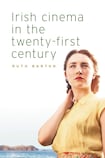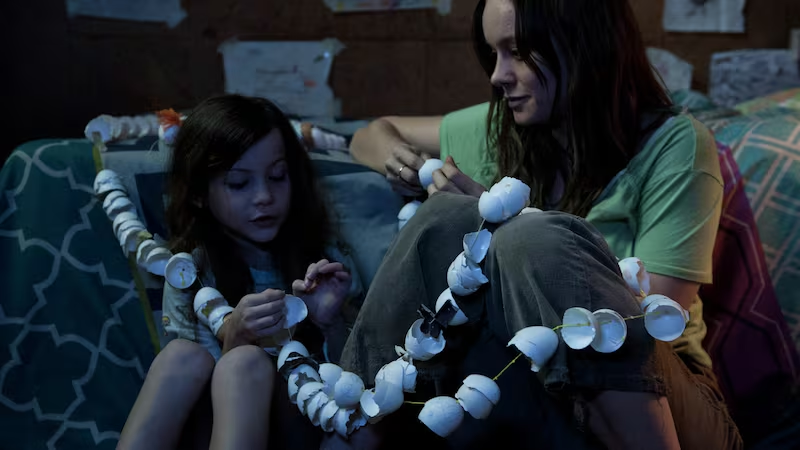
The challenge for Irish film academics has altered in recent years. Put simply, there is a lot more to write about. In times past, the task involved the discussion of a few brave pioneers – sometimes ambitiously posited as an “Irish New Wave” – and much digging among promising short films, no-budget experiments and competent television features. There was no equivalent of the Anglo-Irish industrial-literary complex in film academia.
Beginning with the reconstitution of the Irish Film Board (now Screen Ireland) in 1993, the industry has grown steadily to provide a busy mix of international drama, genre entertainment and arthouse head-scratchers. Its annus mirabilis came in 2016 when, thanks to John Crowley’s Brooklyn, Lenny Abrahamson’s Room and Ben Cleary’s short Stutterer, the Irish Film Board secured more Oscar nominations than Universal and Paramount combined. The nation ground to a halt for the release of The Courier in 1988. Irish films now arrive in cinemas on a fortnightly basis.
You could, thus, argue that Ruth Barton, one of the country’s most distinguished film academics, has set herself an agreeable task with this examination of domestic film in the 21st century. The author now has an abundance of cadavers to dissect. Yet that very fecundity generates its own complications.

Barton focused on the 20th century in Irish National Cinema, an essential text from 2004, and she is still on a search for the slippery entity referenced in that title. “At some point, most writers in the field, myself included, have asked: what does Irish cinema tell us about Irish society?” she writes in her introduction to the new book. What indeed? The moral drawn from a horror film such as Lorcan Finnegan’s recent Vivarium (the homogeneity of suburbia destroys us) may be very different to that extracted from a comedy such as Peter Foott’s hit The Young Offenders (Cork is awesome). If there really is such a thing as “national cinema” then it is surely as various, messy and chaotic as the country itself.
Barton, associate professor in film studies at Trinity College Dublin, nonetheless comes up with some workable answers to her own questions. After a discussion of Carmel Winters’s Snap, a feminist thriller, and Ken Wardrop’s His & Hers, a documentary on motherhood, she concludes that: “contemporary Irish cinema is above all engaged with identity politics”. Well, maybe. Read from a certain angle, all cinema has to do with what we call ourselves and how that decision reflects our position in society.
Her decision to begin each chapter with analysis of a short film lends the book a satisfyingly eccentric structure
"[It] seems to me that that Irish cinema is overall an arthouse cinema, however difficult that category is to establish," she argues later. There is truth in this too. The foreignness of Irish-set films – even genre material – will often consign them to whole-food cinemas in the United States. As Barton also points out, "Irish film-makers may so alter generic conventions that they alienate global audiences; they may be too Irish."
Barton’s search for the national cinema feels less Quixotic when she tilts at the documentary. “So focused are Irish documentaries on exploring Irish places and identities … that it would not be a stretch to argue that they are the true claimants to the mantle of a national cinema,” she writes. Warming to this convincing argument, she exercises her critical muscles most effectively on an engagement with Pat Collins’s imaginative essay films. The academic is at home with allusive, densely textured pieces such as Silence or Living in a Coded Land.
Elsewhere, casual readers may find themselves gasping for relief from the language of the Senior Common Room. Bad things are "problematic". Specific types of bad thing are "neoliberal". (John Carney's harmless Once, for instance, comes to a "firmly neoliberal conclusion".) If you don't know what a "chronotope" is at the beginning then you will do so by the close. "It is, in another familiar theoretical trope, a Foucaultian 'heterotopia'," Barton writes. Not all that familiar, I'd wager.
This is unfair. Published by Manchester University Press, Irish Cinema in the Twenty-First Century is aimed at an academic readership and, achieving impressive comprehensiveness in a compact package, it deserves to become a standard text on an exciting, still developing period in Irish culture. There is useful material here on horror, Northern Ireland, animation and the continuing underrepresentation of women. Her decision to begin each chapter with analysis of a short film lends the book a satisfyingly eccentric structure.
Lord alone knows where we go from here.













